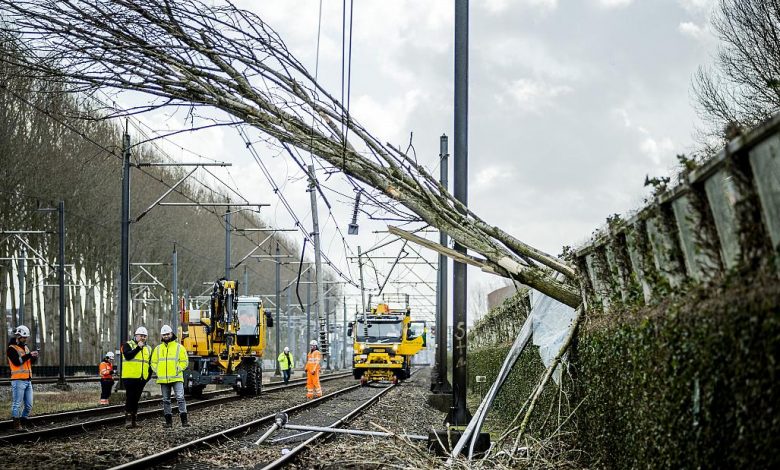Storm Franklin: Could predicting extreme weather save us from disasters like this?
Workers carry out repair work on an overhead line and a railway in Maarssen on February 19, 2022, after Storm Eunice hit northern Europe.

Our best chance to defeat a raging storm is to be one step ahead of it.
That’s why scientists have come up with a new model to predict when extreme weather events are going to happen, where they are going to hit and what kind of damage they are going to cause – so that we can act in time.
By carefully observing the relation between wind speeds and faults on the electricity networks, we are now able to predict when a storm is going to hit as early as 24 hours before it approaches.
“Consequence forecasting”, as climate experts and engineers call it, will allow first responders and preventative resources to be deployed where they are needed when the storm hits.
What was the damage caused by Storm Eunice/Franklin?
In a single weekend of havoc, Storm Eunice uprooted trees, wrecked cars, toppled London’s iconic O2 Arena’s rooftop and killed 16 people in Western Europe.
The UK, which issued a rare red warning over the storms, estimated the damage caused by the fierce winds could cost the country up to £360 million (over €430 million), as hundreds of thousands were left without power and over a million were temporarily disconnected.
In Poland, another million people were left without power on Saturday afternoon.
Travelling was brought to a halt in the Netherlands, France, Ireland and Germany, where the train networks were paralysed.


